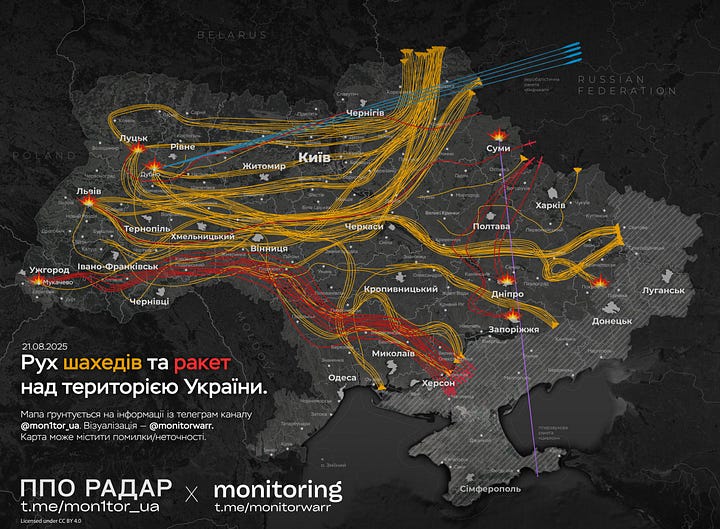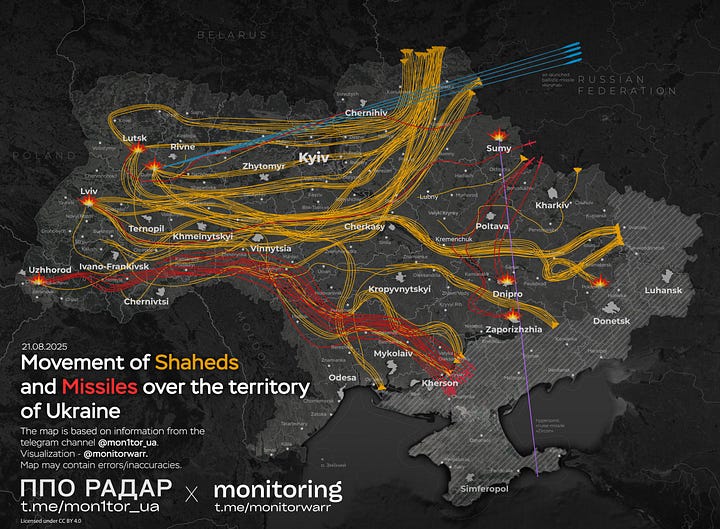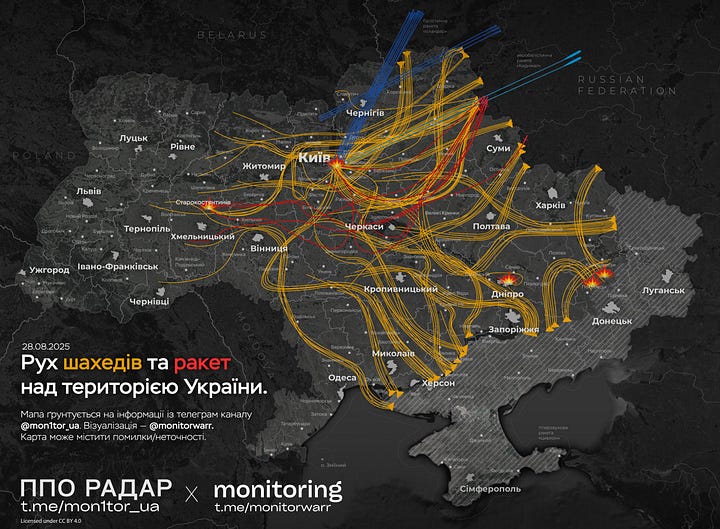Ukrainian Disclosures, Unofficial Maps Highlight Porous State of Ukrainian Air Defences
🇷🇺 🇺🇦
Note: The following text was originally posted on my X/Twitter account.
Unofficial maps such as these, which draw upon open source monitoring of air defence activity and official warnings from the Ukrainian Air Force, should lead observers to ask how porous Ukraine's air defences must continue to be despite the immense allocations toward bolstering the country's air defences. This notably includes the increasingly widespread employment of rather inexpensive uncrewed aircraft turned (remotely-) human-piloted surface-to-air munitions of both the multirotor and fixed-wing variety. Unlike most surface-to-air missile systems, these are optimized against slow, non-maneuvering/poorly maneuvering, and generally unresponsive targets such as Shahed-136/Geran-2/Garpiya propeller-driven fixed-wing strike drones—which are typically equipped with either 50-kg or 90-kg class warheads—and Gerbera propeller-driven fixed-wing decoy drones. It is important to note that decoy drones—which appear to be primarily unarmed but which can be equipped with a 1-3 kg warhead at the cost of a reduction in maximum range-endurance—appear to regularly constitute some 40-50% of all the "strike drones" that the Ukrainian Air Force's daily official disclosures claim Russia to have launched on a given day.




The apparent ongoing existence of very porous Ukrainian air defences against the likes of the Shahed-136/Geran-2/Garpiya—and the apparent inability of Ukraine's air defences to intercept most, let alone all, the inbound Russian strike and decoy drones along the frontlines/international border draws attention to the potential effectiveness of Russia's recent shift toward employing Shahed-136/Geran-2/Garpiya strike drones against proximate battlefield targets located up to some 50 or so kilometers from the frontlines.

